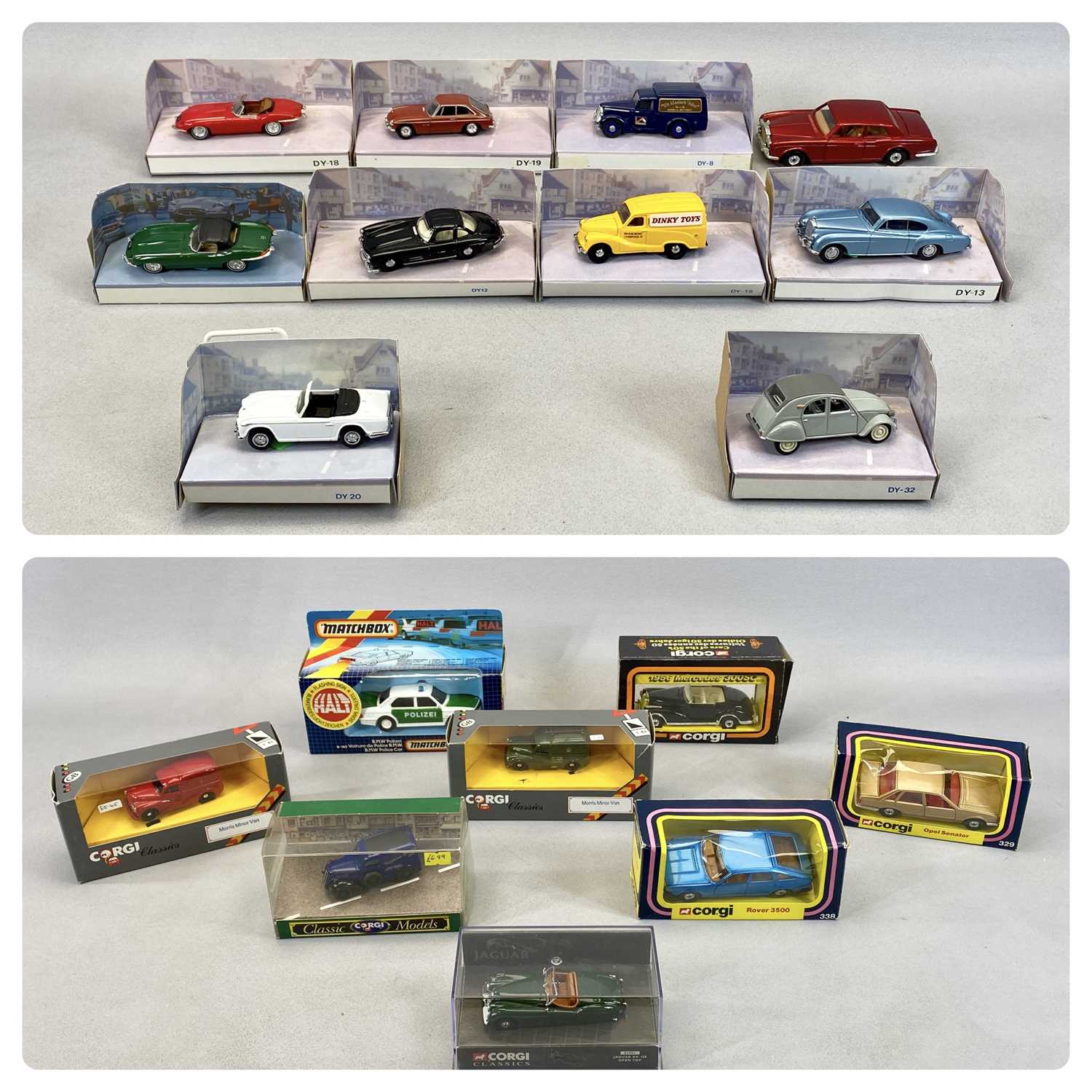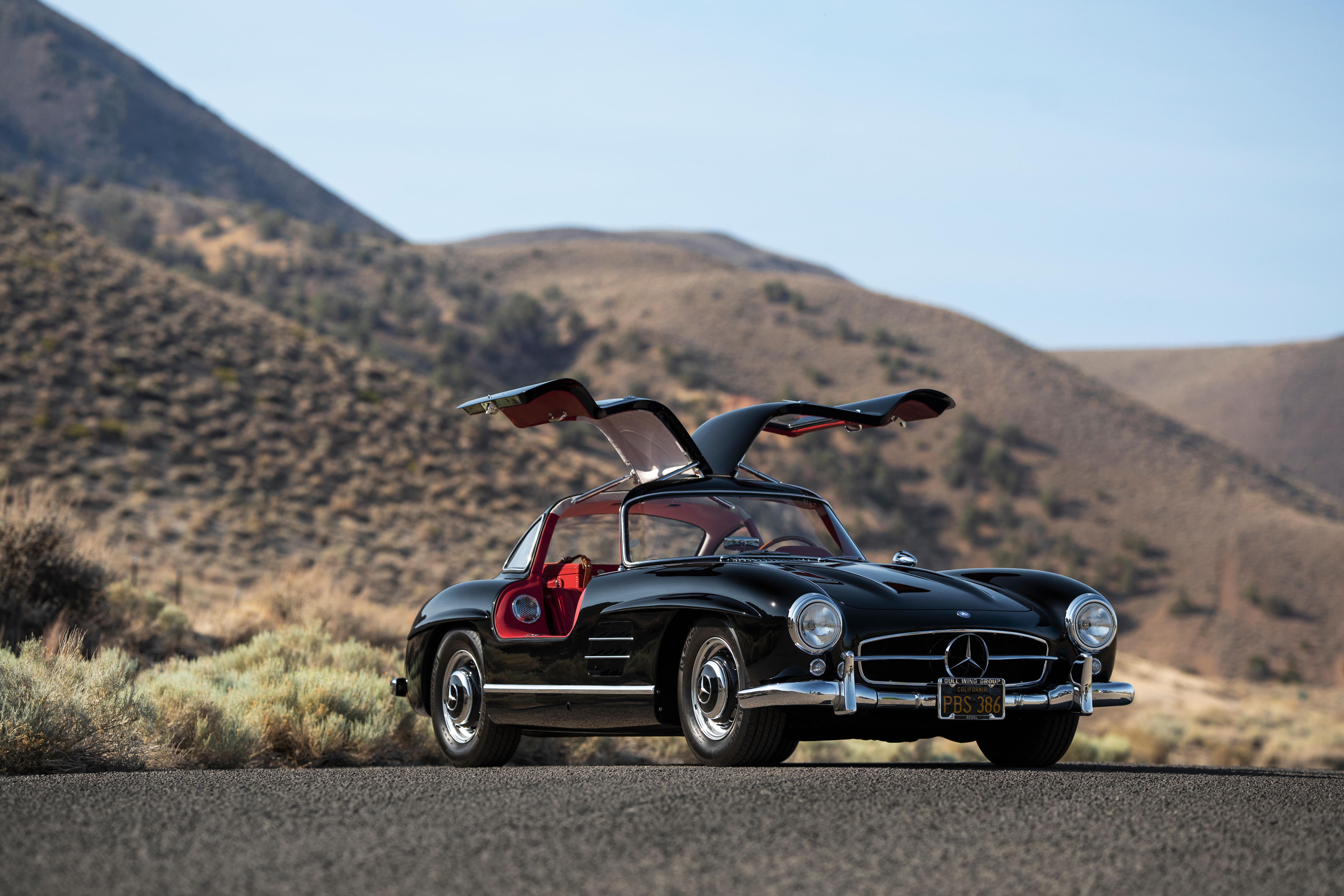2,996cc SOHC Inline 6-Cylinder Engine Bosch Mechanical Fuel Injection 240bhp at 6,100rpm 4-Speed Manual Transmission 4-Wheel Independent Suspension 4-Wheel Drum Brakes * Offered from private collector ownership of more than 20 years * Desirable early Gullwing in iconic livery for model * Original U.S. New York delivered example * Copy of Factory Datacard on file To view a YouTube walkaround of this lot please click here Previewing in Bedford Hills, New York by appointment. Please contact motors.us@bonhams.com for scheduling. The Mercedes-Benz 300 SL Gullwing In 2021, Daimler-Benz will celebrate a remarkable 135th anniversary of their birth, their history is a rich tapestry of engineering innovation, sports competition and refined luxury above all. Across the spectrum of automobiles to have emerged from Benz, Daimler and Mercedes works if there was one single production model which encapsulates those core values and resonates across generations, it would almost certainly be the 'Flügeltürer' or Gullwing of the 1950s. The 300SL coupe was the direct descendant of Mercedes-Benz' Le Mans W194 competition coupe, conceived in 1952 and aimed at wresting the World Sportscar Championship from Alfa Romeo, Ferrari, and Lancia, which were dominating post-war endurance racing. Mercedes-Benz historian W. Robert Nitzke writes that company management wanted to jump back into Grand Prix racing, where it had been so successful before the war, but lacked the time necessary to design, build, and develop a new single-seater for the 1954 season. Instead, Chief Engineer Fritz Nallinger suggested that the company build a new two-seat sports car utilizing the strong in-line SOHC six-cylinder engine from its luxurious 300 series. Because the engine and drivetrain were relatively heavy, the chassis would have to be extremely light. Test Department manager Rudolf Uhlenhaut, having some experience with tubular chassis design, sat down with construction engineer Joseph Müller and laid out an extremely light (154 pounds) and rigid lattice-work chassis capable of accommodating the big in-line six. One major problem soon presented itself: there was no way to mount conventional doors without compromising the rigidity of the chassis. The solution was to raise the entry so that the doors cut into the roof, but that meant hinging them from the top, thus giving birth to this car's timeless signature design feature. The 300SL's first racing trial was the 1952 Mille Miglia, where Kling finished second to Giovanni Bracco's open Ferrari, while Rudolf Caracciola was fourth, the two Gullwings being split by a Lancia. The third Coupe had gone off the road early in the grueling contest. Next came the Grand Prix of Berne, where a quartet of 300SLs took the start and swept the top three positions, Caracciola having crashed in what would prove to be his last race. Then came Le Mans, where Uhlenhaut struck fear into the competition by bringing an SL coupe fitted with a hand-operated air brake mounted on the roof. While that particular car was not raced, Mercedes would tuck the idea in its pocket for future use. After the grueling 24-hour epic, a pair of 300SLs had finished in the top two positions...and were then driven back to the factory! Mercedes-Benz sat out the 1953 and 1954 sports car seasons, concentrating instead on developing its new Grand Prix car. But, the SLs weren't done. they reappeared in 1955 as the airbrake-equipped 300SLR, utilizing that feature and numerous more of the advancements were successfully tested on the company's Formula One racing cars. The year would bring triumph and tragedy: 300SLRs winning at Buenos Aires, the incredibly difficult Mille Miglia—where Stirling Moss and Denis Jenkinson won at a record average speed of just under a hundred miles an hour—the Nurburgring, Spa, Zandvoort, Aintree, Kristianstad, Monza, Dundrod, and Sicily's Targa Florio. The only setback, and one that would have devastating consequences, occurred at Le Mans, where tea
2,996cc SOHC Inline 6-Cylinder Engine Bosch Mechanical Fuel Injection 240bhp at 6,100rpm 4-Speed Manual Transmission 4-Wheel Independent Suspension 4-Wheel Drum Brakes * Offered from private collector ownership of more than 20 years * Desirable early Gullwing in iconic livery for model * Original U.S. New York delivered example * Copy of Factory Datacard on file To view a YouTube walkaround of this lot please click here Previewing in Bedford Hills, New York by appointment. Please contact motors.us@bonhams.com for scheduling. The Mercedes-Benz 300 SL Gullwing In 2021, Daimler-Benz will celebrate a remarkable 135th anniversary of their birth, their history is a rich tapestry of engineering innovation, sports competition and refined luxury above all. Across the spectrum of automobiles to have emerged from Benz, Daimler and Mercedes works if there was one single production model which encapsulates those core values and resonates across generations, it would almost certainly be the 'Flügeltürer' or Gullwing of the 1950s. The 300SL coupe was the direct descendant of Mercedes-Benz' Le Mans W194 competition coupe, conceived in 1952 and aimed at wresting the World Sportscar Championship from Alfa Romeo, Ferrari, and Lancia, which were dominating post-war endurance racing. Mercedes-Benz historian W. Robert Nitzke writes that company management wanted to jump back into Grand Prix racing, where it had been so successful before the war, but lacked the time necessary to design, build, and develop a new single-seater for the 1954 season. Instead, Chief Engineer Fritz Nallinger suggested that the company build a new two-seat sports car utilizing the strong in-line SOHC six-cylinder engine from its luxurious 300 series. Because the engine and drivetrain were relatively heavy, the chassis would have to be extremely light. Test Department manager Rudolf Uhlenhaut, having some experience with tubular chassis design, sat down with construction engineer Joseph Müller and laid out an extremely light (154 pounds) and rigid lattice-work chassis capable of accommodating the big in-line six. One major problem soon presented itself: there was no way to mount conventional doors without compromising the rigidity of the chassis. The solution was to raise the entry so that the doors cut into the roof, but that meant hinging them from the top, thus giving birth to this car's timeless signature design feature. The 300SL's first racing trial was the 1952 Mille Miglia, where Kling finished second to Giovanni Bracco's open Ferrari, while Rudolf Caracciola was fourth, the two Gullwings being split by a Lancia. The third Coupe had gone off the road early in the grueling contest. Next came the Grand Prix of Berne, where a quartet of 300SLs took the start and swept the top three positions, Caracciola having crashed in what would prove to be his last race. Then came Le Mans, where Uhlenhaut struck fear into the competition by bringing an SL coupe fitted with a hand-operated air brake mounted on the roof. While that particular car was not raced, Mercedes would tuck the idea in its pocket for future use. After the grueling 24-hour epic, a pair of 300SLs had finished in the top two positions...and were then driven back to the factory! Mercedes-Benz sat out the 1953 and 1954 sports car seasons, concentrating instead on developing its new Grand Prix car. But, the SLs weren't done. they reappeared in 1955 as the airbrake-equipped 300SLR, utilizing that feature and numerous more of the advancements were successfully tested on the company's Formula One racing cars. The year would bring triumph and tragedy: 300SLRs winning at Buenos Aires, the incredibly difficult Mille Miglia—where Stirling Moss and Denis Jenkinson won at a record average speed of just under a hundred miles an hour—the Nurburgring, Spa, Zandvoort, Aintree, Kristianstad, Monza, Dundrod, and Sicily's Targa Florio. The only setback, and one that would have devastating consequences, occurred at Le Mans, where tea















Try LotSearch and its premium features for 7 days - without any costs!
Be notified automatically about new items in upcoming auctions.
Create an alert